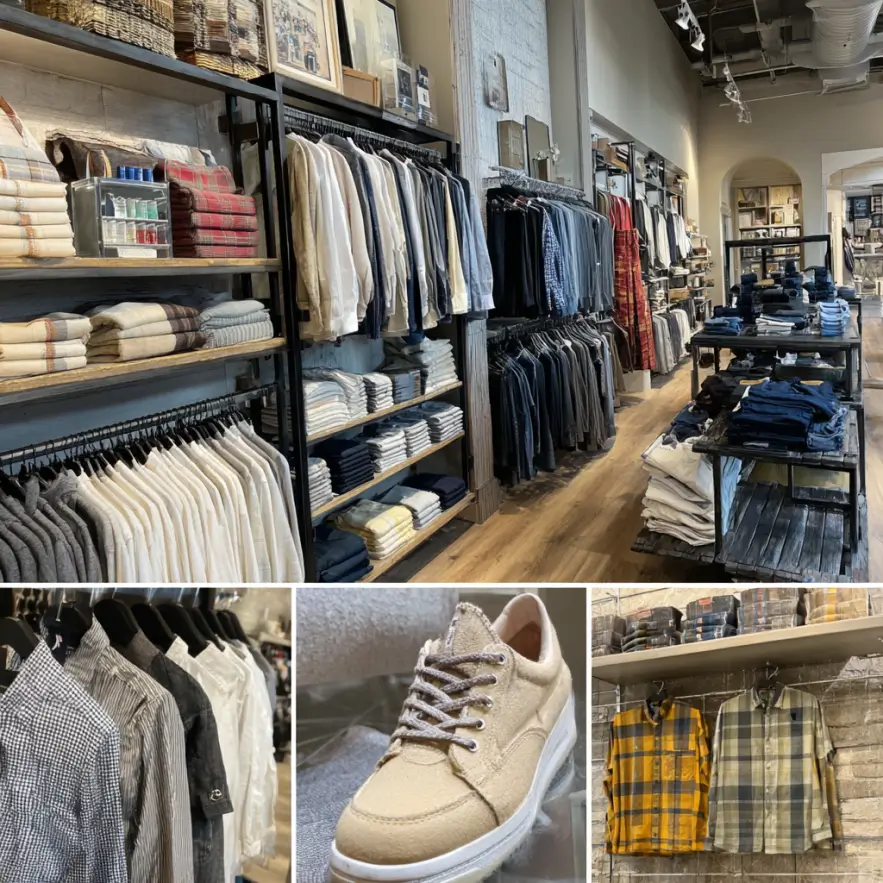Small-format retail is becoming a vital part of the urban infrastructure. No longer tied to shopping malls, these businesses operate closer to people—near bus stops, in courtyards, by metro stations. Geography is only part of the story. What really matters is the approach: mobility, simplicity, recognizability. These “palm-sized” formats offer new business opportunities, animate the urban fabric, and reflect the shift in how people consume and move through cities
Why small doesn’t mean weak: the power of stores under 100 m²
More and more entrepreneurs and developers are turning to small retail spaces. What was once seen as a “temporary fix” or compromise is now a standalone business model. A shop of 30–70 m² can be more profitable than a larger one due to lower rent, staffing, and logistics costs.
Small retail outlets respond more quickly to customer needs. They’re easier to reconfigure, update, close, or relocate. This flexible format is especially valuable in dense urban areas, where convenience and immediacy matter most. People need quick access to food, basic goods, coffee, and everyday services—and compact retail delivers.
Interest in small formats is also driven by the “15-minute city” trend, where everything you need is within walking distance. These points of sale provide that accessibility: nestled into courtyards, built into façades, or placed along pedestrian routes and transit hubs. They’re not destinations “somewhere else”—they serve people “right here.”
Another strength is the ability to test unique concepts. Whether launching a local brand or trying a “one-price store,” small formats allow businesses to experiment with minimal risk. If an idea fails, the loss is limited. If it succeeds, it’s easy to scale.
Small-format retail performs best in neighborhoods already full of life. Discover how retail revives residential districts, enhancing comfort and community engagement.
Architecture of small points: from kiosks to smart pavilions
The success of small formats often hinges on how they look. Architecture plays as important a role as the product range. Today’s “kiosks” aren’t the dull booths of the past—they’re sleek modules made of CLT panels, glass, metal frames, with clear navigation and thoughtful ergonomics.
A promising approach is the use of mobile pavilions. These can be relocated if the site underperforms, making them ideal for temporary projects, city events, or pilot launches. Quick to assemble, requiring no permanent foundation, and easier to permit—they’re a practical urban solution.
Built-in outlets are also effective, especially in new residential developments. Their design aligns with the overall architecture, and transparent façades create visual openness. This reduces friction with residents and adds aesthetic value to the neighborhood.
Pay close attention to lighting and signage, especially in the evening. Small retail points often compete for fleeting attention—people might only glimpse them from the corner of their eye. Warm lighting, readable signs, and product-focused spotlights are inexpensive yet crucial details.
Where small formats work best: field insights
Not all urban spaces suit small retail equally. But there are four types of locations where compact formats excel:
- Transit hubs — metro stations, bus stops, train platforms. Fast service, clear offerings, and high foot traffic are key.
- Residential districts — walkability matters, foot traffic is steady, and competition is less intense.
- Parks and promenades — mobility, seasonality, and snack-focused menus dominate.
- Downtown business zones — ideal for coffee shops, bakeries, and mini-markets for lunch breaks.
One example comes from Portland, Oregon, where a group of micro-bakeries operates from 20 m² container stalls at intersections near light rail stops. Each one offers a focused menu, strong branding, and consistent service. In Toronto, several mobile food kiosks are designed to match the city’s heritage architecture, making them feel native to the neighborhoods they serve.Small retail thrives when service outweighs scale. Fast, simple, nearby—these are the three pillars of success. Customers aren’t looking for a full range—they’re seeking a quick solution right now.
Numbers to know before opening a small retail point
Launching a small store requires precise planning. A misjudged location or product mix can be fatal. But field-tested benchmarks help:
- Average payback time: 8–14 months with foot traffic of 800+ people/day
- Max size: 100 m²; ideal range: 40–60 m²
- “Coffee + dessert” models outperform standalone cafés (higher average ticket)
- A storefront display can boost revenue by up to 20%
This format pairs well with franchises—their brand recognition lowers marketing costs. Team size also matters: ideally no more than 3 people per shift, helping reduce expenses and improve operational control.Here’s a rare but powerful tactic: engage local residents in decisions about product selection or interior details. This builds loyalty and a sense of shared ownership—people see the store as “theirs.”
Small retail and the city’s ecology: why they really matter
Small-format retail isn’t just about profit. It affects urbanism and behavior. Micro-shops reduce transport dependency, lower the need to visit malls, and help make cities more compact and manageable. They’re a key piece in the “walkable city” puzzle.
They also help revive dead zones—underused corners with no clear function. A temporary pavilion, coffee stall, or flower kiosk can illuminate a forgotten wall or dead end, making the street feel alive. This fosters safety, encourages foot traffic, and lowers anxiety among passersby.
Equally important, these points of sale nurture entrepreneurship. It’s easier to start small—to test an idea, learn management basics, and gain experience. Small retail becomes a stepping stone toward stable small businesses, especially as large chains continue to dominate space.Cities without small retail become monotonous and fragile. These compact formats bring welcome randomness, uniqueness, and local character. They don’t just sell—they signal that people live, create, and engage in that space.
Questions and answers
In high-footfall zones—transit stops, metro stations, near schools, in parks, and on residential streets.
Coffee kiosks with add-ons like desserts or sandwiches, take-out food stands, and mini convenience stores.
Overestimating traffic, skipping a display window, offering too broad a product range, over-renting space, and ignoring local feedback.

